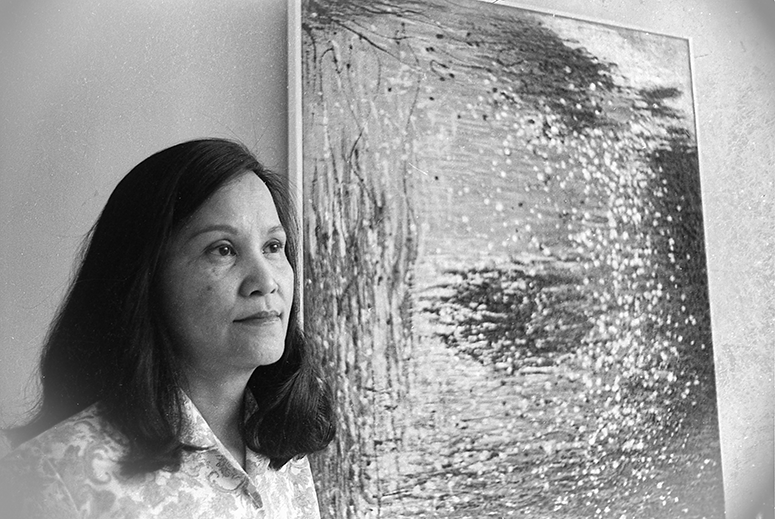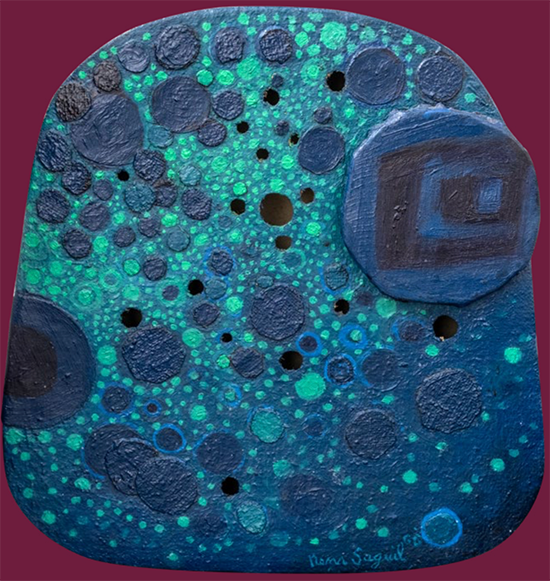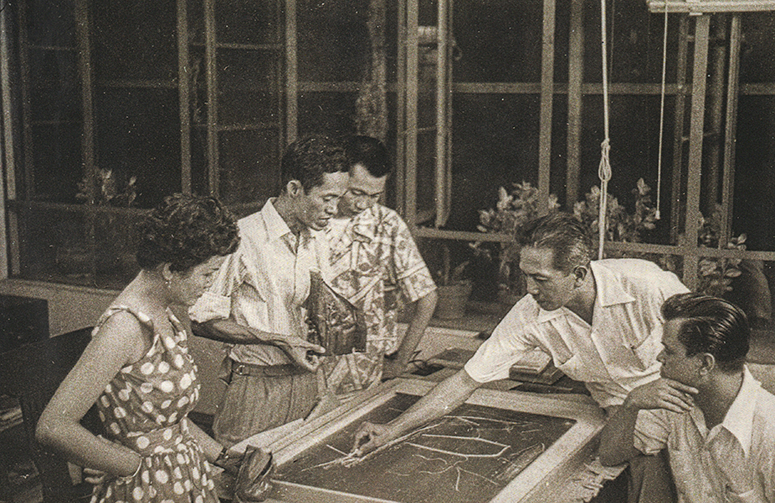The Enigmatic Miss Nena Saguil
Not since the days of Juan Luna and Resurreccion Hidalgo has a Filipino artist pulled up her stakes, forged boldly towards an unexplored world and thrown everything they had away for the sake of making art abroad—that was the arrival of the enigmatic Miss Nena Saguil in Paris in 1954. For this year’s edition of Art Fair Philippines, León Gallery thus spotlights 19 of her works, spanning a colorful career at the show titled “Saguil @110” to mark the anniversary of her birth.
Serendipitously, 70 years after Nena Saguil would arrive in Paris (and after four decades of unstinting devotion to her art), she has finally joined the prestigious valhalla of the Venice Biennale. This month, it announced that Saguil and four other Filipino artists—Anita Magsaysay-Ho, Pacita Abad, Maria Taniguchi and Joshua Serafin—have been given the honor of being featured in the biennial’s over-arching show, the 60th International Art Exhibition.

Venice Biennale curator Adriano Pedrosa revealed the artistic panorama’s title and theme as “Stranieri Ovunque—Foreigners Everywhere.” which is inspired by a series of neon works by French artist collective Claire Fontaine in several languages, including now extinct Indigenous ones.
In an interview, the curator said “it highlights artists who are foreigners, immigrants, expatriates, diasporic emigres, exiled individuals, or refugees.” Furthermore, it will spotlight “artworks created in the past century that are now points of reference for the new generations.”

Nena Saguil was a shooting star that lighted the skies of the Philippine Art Gallery and traversed into the world of the Ecole de Paris founded by Pablo Picasso.
Alongside her friend (and classmate at the College of Fine Arts at the University of the Philippines) Anita Magsaysay-Ho, they were the only female members of an alpha-male crowd of mid-century modernists dominated by the Neo-Realists Hernando R. Ocampo and Cesar Legaspi.

Both Nena and Anita were prizewinners at the influential Art Association of the Philippines but it was Nena who would receive the supreme accolade of being asked to join the landmark show “First Exhibition of Non-Objective Art in Tagala” put together by the Philippine Art Gallery in 1953.
Propelled by that success and thanks to a scholarship from the Walter Damrasch New York-France Foundation, she headed for Paris “to study abstract art” at the Ecole des Arts Americain at Fontainebleau.

Nena would work at a breakneck pace, admitting that she would paint every day, starting new pieces, or revisiting older ones. (She said at one point in 1977 that she had been working on one piece for more than seven years.) She would give painting lessons “strictly for subsistence” as she put it, devoting most of her waking hours to “producing enough works for regular exhibits.”
All in all, Saguil would have her first one-woman show in Paris in 1957—she was a veteran of the Art Association of the Philippines as well as the Philippine Art Gallery, where she had a total of four. All told, she would have 19 solo shows and an astounding 56 group shows, sometimes joining two or three a year in her 40 years of artistic life in Paris. It’s stark testimony of her standing in Paris in the art community. (“You have to be invited to exhibit with a group,” she would note wryly.)

Saguil would find allies in the French art community, particularly with Waldemar George who was recognized as one of the country’s most influential. (He would write a monograph on her brimming with superlatives.) The author Gerard Dufaud, who published a book on Picasso with his daughter Maya, would also collect her avidly. Some of those works are on view at the León Gallery show along with treasures from the Philippine Art Gallery.

She would have legions of admiring art critics, from Leonidas V. Benesa (one of the first Rockefeller Foundation grantees in this field) to our present-day Cid Reyes.
Amid this new dawn for women in art all over the world, Miss Nena Saguil shows us how it was done—with discipline, perseverance, and raw talent.


